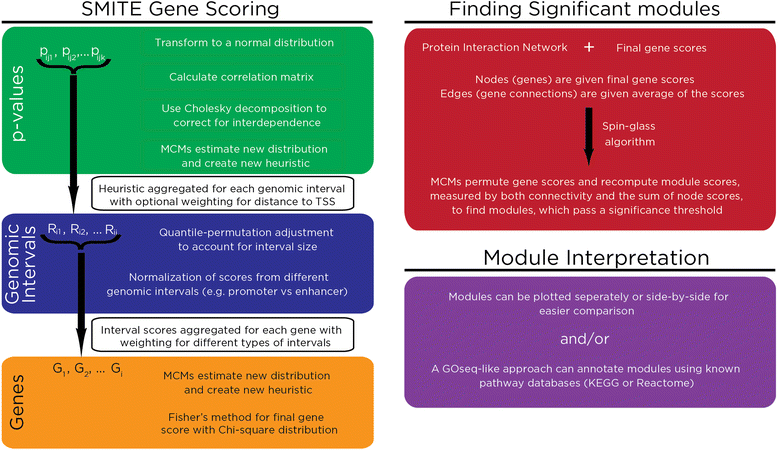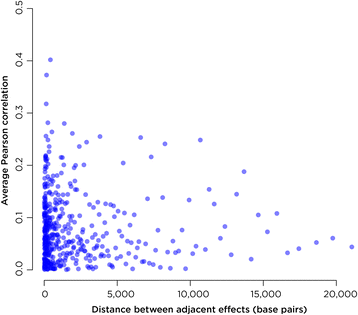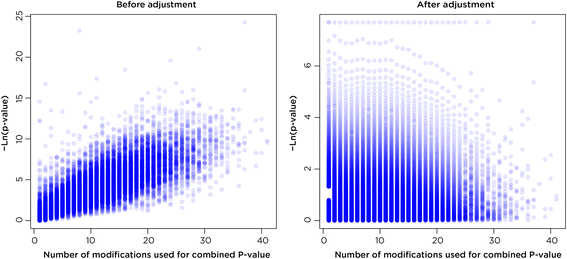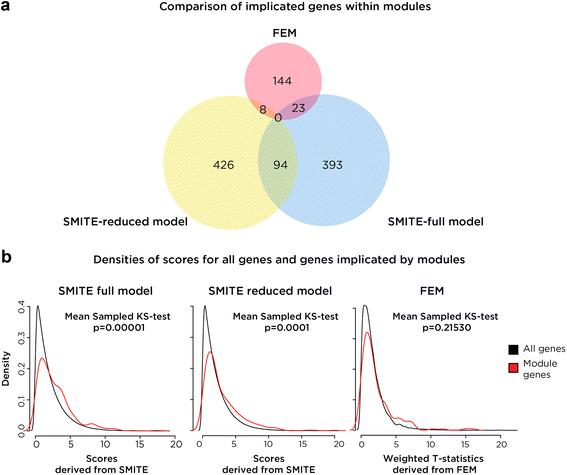SMITE: an R/Bioconductor package that identifies network modules by integrating genomic and epigenomic information
- PMID: 28100166
- PMCID: PMC5242055
- DOI: 10.1186/s12859-017-1477-3
SMITE: an R/Bioconductor package that identifies network modules by integrating genomic and epigenomic information
Abstract
Background: The molecular assays that test gene expression, transcriptional, and epigenetic regulation are increasingly diverse and numerous. The information generated by each type of assay individually gives an insight into the state of the cells tested. What should be possible is to add the information derived from separate, complementary assays to gain higher-confidence insights into cellular states. At present, the analysis of multi-dimensional, massive genome-wide data requires an initial pruning step to create manageable subsets of observations that are then used for integration, which decreases the sizes of the intersecting data sets and the potential for biological insights. Our Significance-based Modules Integrating the Transcriptome and Epigenome (SMITE) approach was developed to integrate transcriptional and epigenetic regulatory data without a loss of resolution.
Results: SMITE combines p-values by accounting for the correlation between non-independent values within data sets, allowing genes and gene modules in an interaction network to be assigned significance values. The contribution of each type of genomic data can be weighted, permitting integration of individually under-powered data sets, increasing the overall ability to detect effects within modules of genes. We apply SMITE to a complex genomic data set including the epigenomic and transcriptomic effects of Toxoplasma gondii infection on human host cells and demonstrate that SMITE is able to identify novel subnetworks of dysregulated genes. Additionally, we show that SMITE outperforms Functional Epigenetic Modules (FEM), the current paradigm of using the spin-glass algorithm to integrate gene expression and epigenetic data.
Conclusions: SMITE represents a flexible, scalable tool that allows integration of transcriptional and epigenetic regulatory data from genome-wide assays to boost confidence in finding gene modules reflecting altered cellular states.
Keywords: Bioinformatics; Epigenetic; Gene expression; Genomic; Interaction network; Modules.
Figures








Similar articles
-
An Integrated Genomic Approach Identifies HOXC8 as an Upstream Regulator in Ovarian Endometrioma.J Clin Endocrinol Metab. 2020 Dec 1;105(12):dgaa618. doi: 10.1210/clinem/dgaa618. J Clin Endocrinol Metab. 2020. PMID: 32877504
-
Multiple network algorithm for epigenetic modules via the integration of genome-wide DNA methylation and gene expression data.BMC Bioinformatics. 2017 Jan 31;18(1):72. doi: 10.1186/s12859-017-1490-6. BMC Bioinformatics. 2017. PMID: 28137264 Free PMC article.
-
A systems-level integrative framework for genome-wide DNA methylation and gene expression data identifies differential gene expression modules under epigenetic control.Bioinformatics. 2014 Aug 15;30(16):2360-6. doi: 10.1093/bioinformatics/btu316. Epub 2014 May 2. Bioinformatics. 2014. PMID: 24794928
-
Epigenomic and transcriptomic approaches in the post-genomic era: path to novel targets for diagnosis and therapy of the ischaemic heart? Position Paper of the European Society of Cardiology Working Group on Cellular Biology of the Heart.Cardiovasc Res. 2017 Jun 1;113(7):725-736. doi: 10.1093/cvr/cvx070. Cardiovasc Res. 2017. PMID: 28460026 Free PMC article. Review.
-
Epigenomic and transcriptomic analysis of chronic inflammatory diseases.Genes Genomics. 2021 Mar;43(3):227-236. doi: 10.1007/s13258-021-01045-8. Epub 2021 Feb 27. Genes Genomics. 2021. PMID: 33638813 Review.
Cited by
-
DNA methylation as a mediator of genetic and environmental influences on Parkinson's disease susceptibility: Impacts of alpha-Synuclein, physical activity, and pesticide exposure on the epigenome.Front Genet. 2022 Aug 19;13:971298. doi: 10.3389/fgene.2022.971298. eCollection 2022. Front Genet. 2022. PMID: 36061205 Free PMC article. Review.
-
Network assessment of demethylation treatment in melanoma: Differential transcriptome-methylome and antigen profile signatures.PLoS One. 2018 Nov 28;13(11):e0206686. doi: 10.1371/journal.pone.0206686. eCollection 2018. PLoS One. 2018. PMID: 30485296 Free PMC article.
-
Epigenetic regulation of placental gene expression in transcriptional subtypes of preeclampsia.Clin Epigenetics. 2018 Mar 2;10:28. doi: 10.1186/s13148-018-0463-6. eCollection 2018. Clin Epigenetics. 2018. PMID: 29507646 Free PMC article.
-
Multiomics of azacitidine-treated AML cells reveals variable and convergent targets that remodel the cell-surface proteome.Proc Natl Acad Sci U S A. 2019 Jan 8;116(2):695-700. doi: 10.1073/pnas.1813666116. Epub 2018 Dec 24. Proc Natl Acad Sci U S A. 2019. PMID: 30584089 Free PMC article.
-
Nucleoporins in cardiovascular disease.J Mol Cell Cardiol. 2020 Apr;141:43-52. doi: 10.1016/j.yjmcc.2020.02.010. Epub 2020 Mar 21. J Mol Cell Cardiol. 2020. PMID: 32209327 Free PMC article. Review.
References
-
- Wang J, Zhuang J, Iyer S, Lin X, Whitfield TW, Greven MC, Pierce BG, Dong X, Kundaje A, Cheng Y, Rando OJ, Birney E, Myers RM, Noble WS, Snyder M, Weng Z. Sequence features and chromatin structure around the genomic regions bound by 119 human transcription factors. Genome Res. 2012;22:1798–812. doi: 10.1101/gr.139105.112. - DOI - PMC - PubMed
MeSH terms
Grants and funding
LinkOut - more resources
Full Text Sources
Other Literature Sources
Molecular Biology Databases

